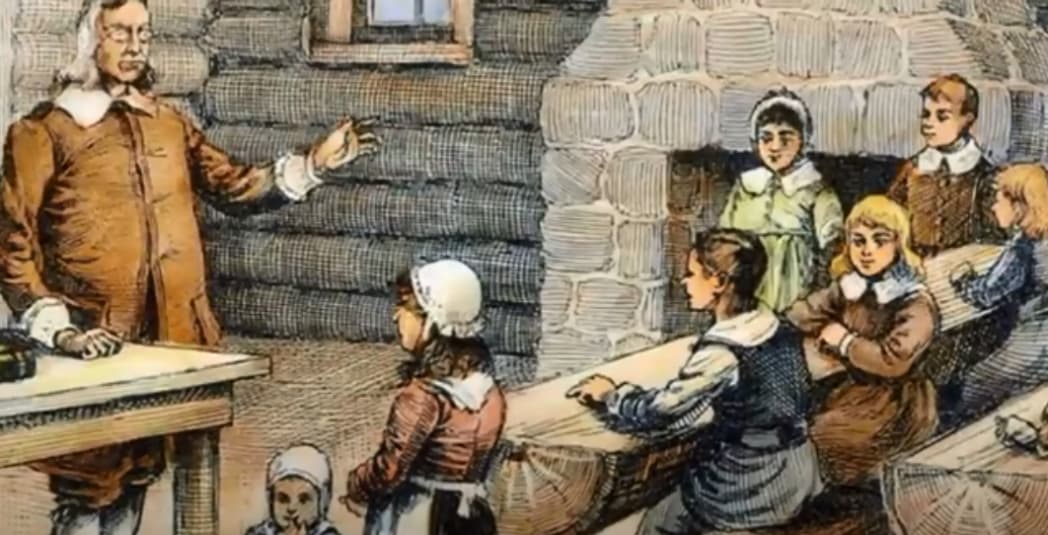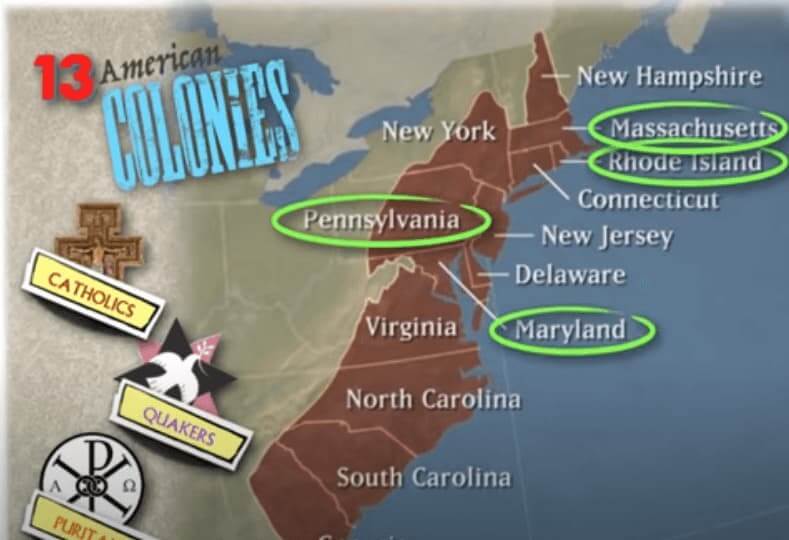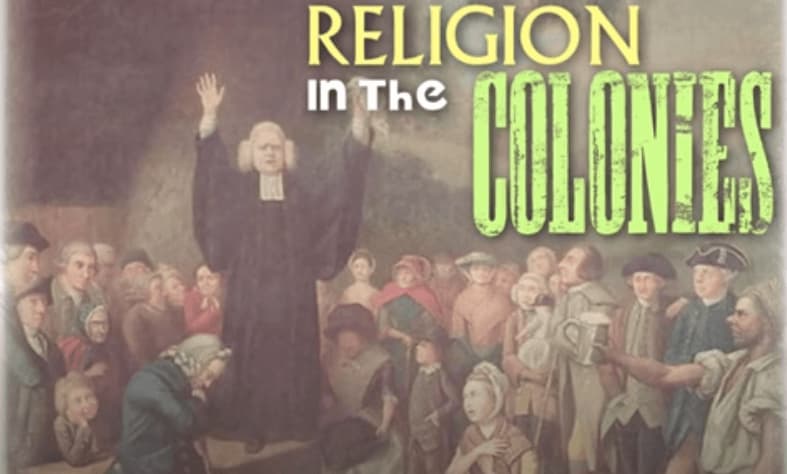The southern colonies of America, including Maryland, Virginia, North Carolina, South Carolina, and Georgia, had a diverse religious landscape. Although Anglicanism was prominent as the main church, Catholicism and various schismatic Protestant denominations were also present in the region.
This article examines the religious dynamics of the southern colonies, examining the major denominations, their impact on society, and the desire for religious freedom that laid the foundation for the development of the region.
Anglicanism: The Established Church
Anglicanism, the official religion of the Southern Colonies, had considerable influence on religious life and political affairs. It emerged from the Church of England and was deeply intertwined with the colonial structure of government. The hierarchy of the Church of England extended to the colonies, with bishops overseeing the religious affairs of Anglican parishes.
In Virginia, the establishment of the Church of England, or Anglican Church, was enshrined in law, and its clergy were financially supported by tax revenues. Anglicanism was also strong in Maryland, where the founder of the colony, Lord Baltimore, sought religious tolerance, ensuring the prominence of the Anglican Church while preserving the rights of Catholics.

Catholicism: A Minority Faith
Although Anglicanism dominated, Catholicism also found its place in the religious fabric of the Southern Colonies. In Maryland, which was founded as a refuge for Catholics, Lord Baltimore established religious toleration through the Tolerance Act of 1649, granting freedom of worship to all Trinitarian Christians. This allowed Catholics to practice their faith openly, contributing to the religious diversity of the region.
In the other southern colonies, however, Catholics faced varying degrees of discrimination and restrictions. Anti-Catholic sentiments, fueled by historical conflicts and political tensions between Protestantism and Catholicism, prevailed. Despite these problems, Catholics continued to practice their faith, establishing congregations in Maryland and, to a lesser extent, in South Carolina.

The Role of Catholicism in Maryland
Catholicism played an important but complex role in the religious landscape of the southern colonies, especially in Maryland. The Maryland colony was founded as a refuge for Catholics by Lord Baltimore, who sought to create a place where religious freedom and tolerance could flourish.
In 1634 Lord Baltimore founded Maryland as a penal colony and in 1649 passed the Act of Religious Tolerance. This act granted religious freedom to all Trinitarian Christians, including Catholics, protecting their right to worship and openly practice their faith. The Religious Tolerance Act was a progressive step toward religious tolerance in the colonies, setting Maryland apart from other regions where religious conformity was more strictly enforced.
Under the Religious Tolerance Act, Catholics in Maryland could establish their own parishes, build churches, and openly practice their faith. They formed vibrant Catholic communities centered around their religious institutions. Most famous among these was St. Mary’s, where the first Catholic cathedral in the English-speaking colonies, known as St. Mary’s Chapel, was built.
Despite the relative religious freedom in Maryland, Catholics still faced problems and discrimination. The Protestant majority in the surrounding colonies viewed Catholicism with suspicion and often viewed it as a threat. The anti-Catholic sentiment was fueled by historical conflicts and political tensions between Protestantism and Catholicism.
Catholicism in Other Colonies
In other southern colonies, such as Virginia, Catholics faced greater obstacles. Virginia was predominantly Anglican, and Anglicanism was the established church. Catholics were subject to restrictions and were deprived of certain civil rights. They were forbidden to hold public office, and Catholic priests were forbidden to hold public worship services. Despite these restrictions, however, there were individual Catholics and small congregations in Virginia, especially in areas bordering Maryland.
In South Carolina, Catholicism also had a limited presence. The colony was predominantly Anglican, but there were a few Catholic families who managed to keep their faith. Because of the prevalence of anti-Catholic sentiment and the dominance of Anglicanism, however, Catholicism remained a minority religion in the region.
In general, although Maryland provided a relatively tolerant environment for Catholics in the southern colonies, Catholics in other regions still faced problems and discrimination. The establishment of Maryland as a refuge for Catholics and the passage of the Religious Tolerance Act was a milestone in the search for religious freedom in colonial America. The presence of Catholicism in the Southern colonies contributed to the religious diversity of the region and left an indelible impact on the broader history of religious freedom in the United States.
Dissenting Protestant Denominations: Seeking Religious Freedom
Along with Anglicanism and Catholicism, the Southern colonies saw the growth of dissenting Protestant denominations that sought greater religious freedom. Dissenters who challenged the doctrines and practices of the Church of England formed their own congregations and communities.
One such group was the Baptists, who appeared in the region in the late seventeenth century. They advocated religious freedom and emphasized the importance of adult baptism by immersion, in contrast to the Anglican practice of infant baptism. Baptists faced persecution, especially in Virginia, where Anglicanism was deeply entrenched. But their numbers and influence continued to grow, and they eventually contributed to the broader evangelical movement sweeping the colonies.
The Quakers, or Society of Friends, was another divisive group that left an indelible mark on the Southern colonies. Known for their pacifism, egalitarianism, and inner spirituality, the Quakers faced resistance from colonial authorities because of their refusal to take the oath of office and participate in hostilities. Despite this, they established strong communities in North Carolina, where a tolerant atmosphere allowed them to flourish.
Presbyterians also found a foothold in the southern colonies, especially in North Carolina and South Carolina. Their emphasis on predestination, Scriptural authority, and church government attracted many colonists. Presbyterians, like other dissenters, faced obstacles imposed by the Anglican establishment but managed to thrive in the face of adversity.
Conclusions
The religious landscape of the southern colonies was a tapestry woven of threads of Anglicanism, Catholicism, and various schismatic Protestant denominations. Anglicanism, as a recognized church, had considerable influence and shaped the social and political structure of the colonies. Catholics, meanwhile, maintained a presence, mostly in Maryland, while encountering difficulties and varying degrees of acceptance.
Dissenting groups such as Baptists, Quakers, and Presbyterians reclaimed space for religious freedom and contributed to the region’s diversity. These communities played a vital role in shaping the social and political development of the colonies, seeking religious freedom and challenging the hegemony of the established church.
The religious dynamics of the southern colonies reflect the broader quest for religious freedom and the complex interplay between faith, politics, and society during the colonial era. Understanding these historical intricacies helps us appreciate the rich tapestry of beliefs and values that continue to shape the United States today.


No Responses